Bengaluru Lady Grows Alphonso Mangoes & Even Coffee In Buckets on Her Terrace
“I had almost eleven different varieties of brinjals last year,” she tells me. There’s also lady’s finger, corn, bitter gourd, bottle gourd, snake gourd, beans, different kinds of greens, tomato, five varieties of sweet potato, radish, and turmeric.

“Believe me when I say my plants respond to me. They even understand my mood and tone,” says Indira Ashok Shah, who practices terrace gardening in her home in Bengaluru.
On her terrace, which is roughly about 3300 square feet, Indira has managed to create a little haven with over 600 plants. Her garden is home to almost 60 plus varieties of vegetables, 30 plus varieties of fruits and medicinal herbs. The self-reliant gardener spends little on buying produce from the market, what with a coffee plant taking care of her filter coffee stash and a mango plant offering the summer fruit.
In conversation with The Better India (TBI), 62-year-old Indira shares with us little nuggets about her terrace garden.
Growing Our Own Food Is Part of Our Culture
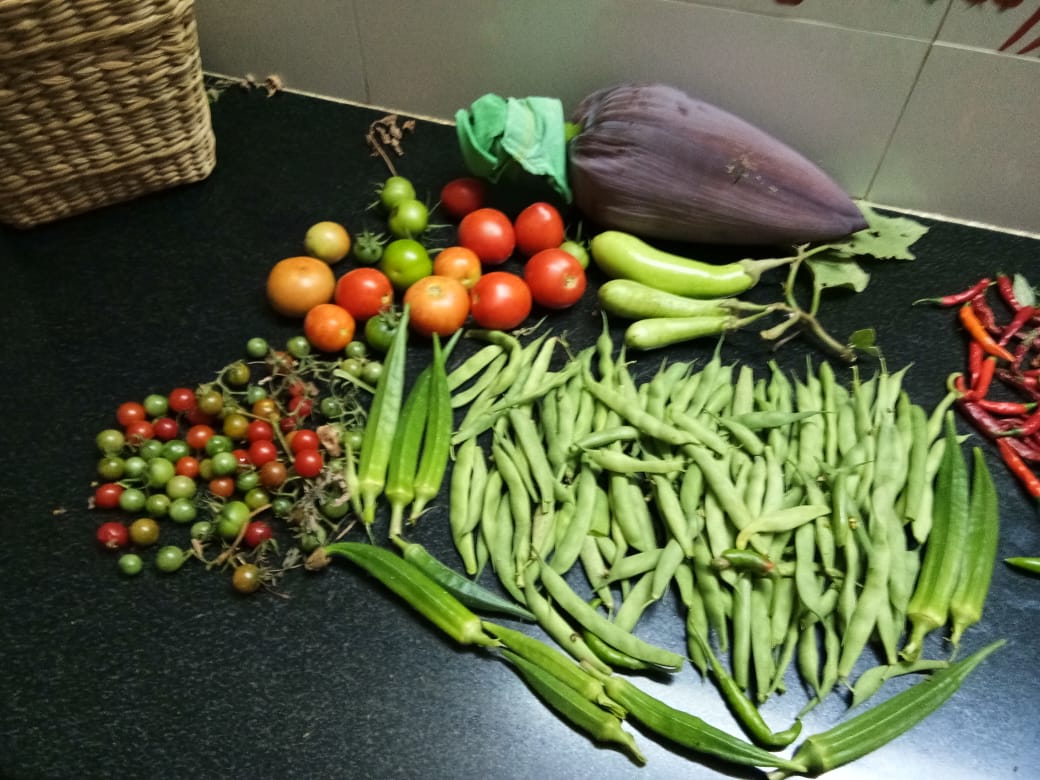
“My mother and grandmother would grow everything at home — right from banana to yam. I grew up in that environment and gardening came to me naturally,” says Indira. It was a time when there were no hose pipes to water the plants and Indira recollects how she was in charge of fetching water in buckets for her grandmother who would then water the plants.
“I leant how some plants needed more water and others lesser. That was my first inculcation into the world of growing our own food,” she tells me. In fact, even treating pests was something that she learnt very early on in life. “In those days we boiled water for bathing using firewood and then the ash as pesticides. That did the job very well and we never resorted to any store-bought or chemical fertilisers.”
She does mention that the kinds of pests today are very different from what she grew up encountering.
“Pests today seem to have evolved and sometimes using organic and natural pesticides does not help, unfortunately.”
Starting from Scratch – Turning to Terrace Gardening
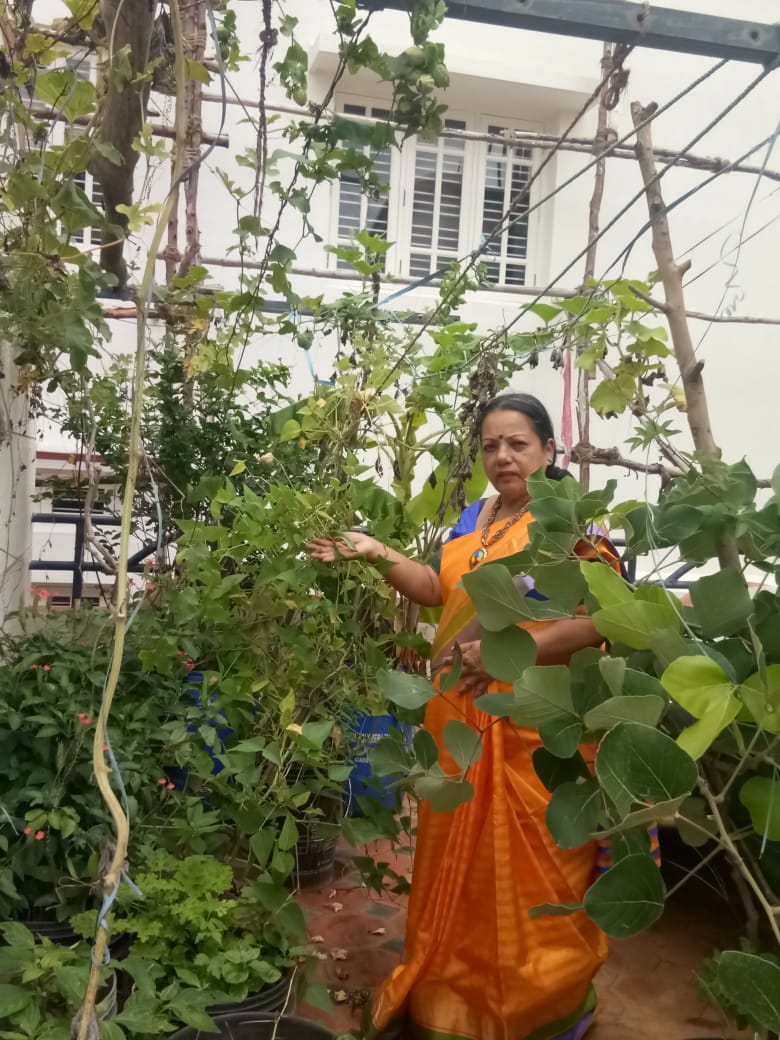
“When we moved to our home twelve years ago, the adjoining plot was empty, had a lot of unwanted shrubs growing and at times I even saw snakes like viper and krait. I started growing plants there to help with the reptile problem. I had almost 50 banana plants, cauliflower, and all kinds of greens. One day, almost overnight, the local authorities razed all my plants to the ground because the owners decided to build something there.”
“Until then I had never thought of terrace gardening as an option,” she confesses. It was an online terrace gardening community that helped Indira set up her very space.
She started with growing the vegetables she had seen her grandmother and mother grow over the years, and with the passage of time has included exotic fruits and varieties of vegetables.
‘I have around 600 plants growing in my terrace garden’

“I have completely taken over my 3300 sq.ft. terrace space. I grow fruits like dragon fruit, orange, custard apple, pineapple, a mango tree, which is grown in a twenty-litre bucket, watermelon, papaya, water apple, jamun, fig, star fruit, and even cherries.”
Many of these fruits are grown in 20-litre buckets and Indira says that if given proper attention and care they will all bloom and flower.
In terms of vegetables, there is an equally diverse variety that Indira grows. “I had almost eleven different varieties of brinjals last year,” she tells me. There’s also lady’s finger, corn, bitter gourd, bottle gourd, snake gourd, beans, different kinds of greens, tomato, five varieties of sweet potato, radish, and turmeric.
To sum it all up, she says, “I can cook all my meals without buying any vegetables from outside. My terrace garden takes care of my family’s requirements.”
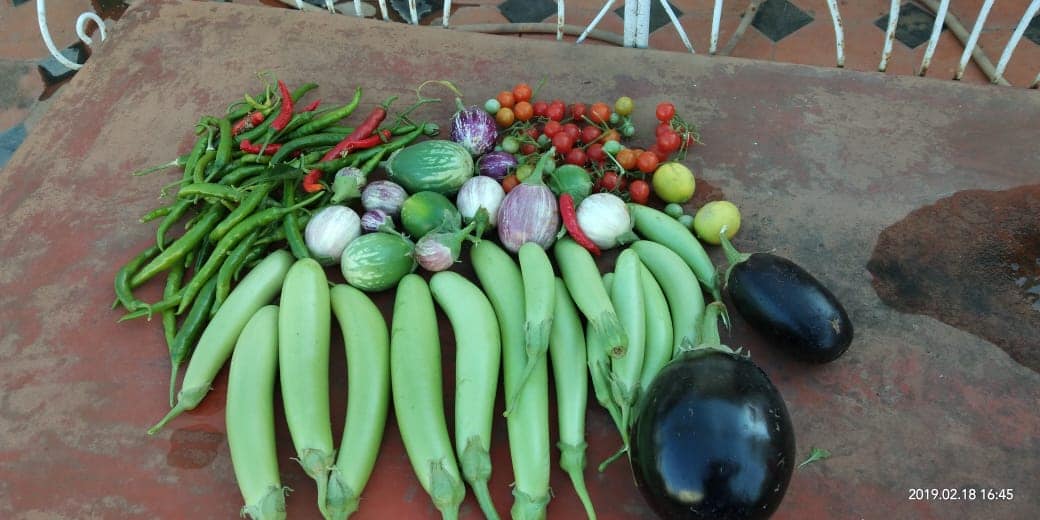
She often takes her grandchildren up to the terrace where they set up a small picnic. “It is very important for me to instil the importance of growing their own food in them. They seem to value it and nothing makes me happier than seeing them thank the plants for the food they eat,” she says with visible pride.
Ginger Garlic Green Chillies – Keep Pests Away
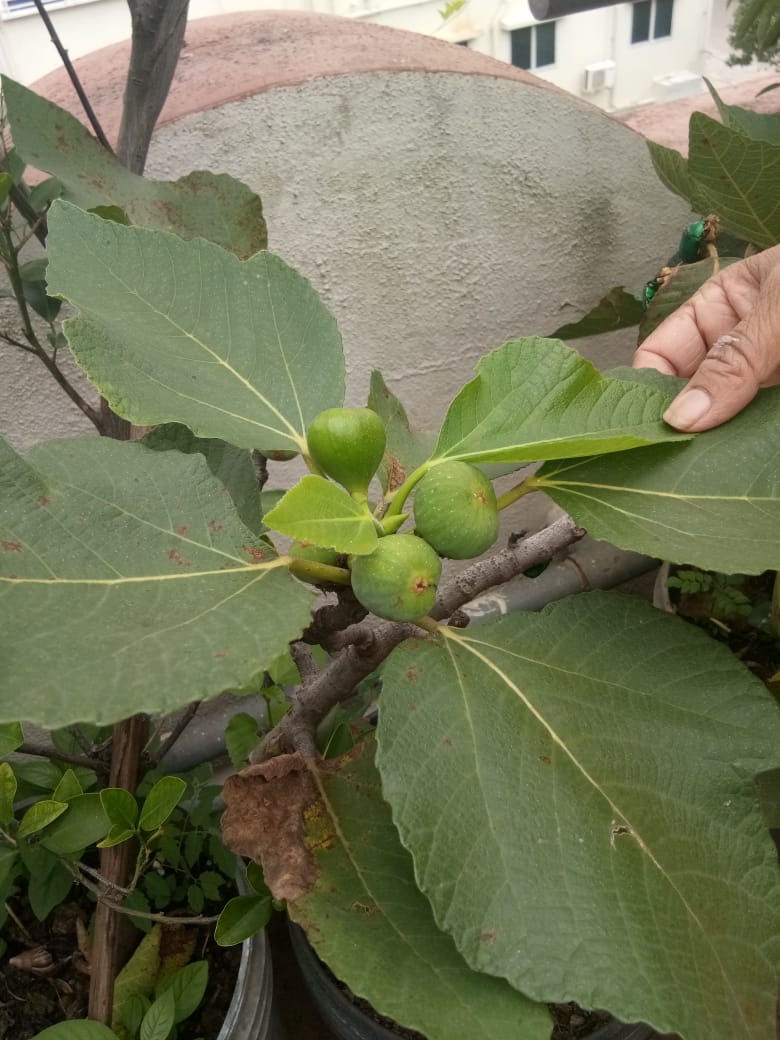
Indira shares a quick tip on how to make pesticides at home.
1. Take equal portions of ginger, garlic, and green chilly and grind into a fine paste.
2. Strain the mixture next and collect the liquid and add some water.
3. This mixture, according to Indira, is an excellent pesticide and can be made fresh and sprayed on leaves that get infected with aphids, which are small sap-sucking insects.
“Wherever you spot aphids, make sure you spray this mixture to curtail its growth immediately. Else one infected, aphids can cause a lot of harm to the plants,” shares Indira. She also uses onion peels to make pesticide.
“I soak half a kg of onion peel in half a litre of water for three to four days. I then use that water to spray on affected plants and this is called a foliage spray.”
She also advocates practising water recycling techniques. “I ensure that all the water used in the kitchen to wash and rinse vegetables and grains goes into watering the plants. I have also set up a rainwater harvesting system at home that helps in recharging the groundwater levels.”
‘Never throw any seed into the garbage’

Indira shares that once the seeds of Alphonso mangoes found their way to her backyard. Surprisingly one of it sprouted that she nurtured.
Imagine a Ratnagiri Alphonso mango tree yielding fruit in Bengaluru – a place that has nothing in common with its original habitat in terms of climate, soil, sunlight, or nutrients!
On the topic of growing mangoes on the terrace, Chellaiah Sellamuthu, Associate Director, Horticulture Department, NDMC says, “There are various varieties of dwarf mangoes now available and one can grow these varieties in their terrace space as well. All one needs is a good container for it to grow.”
Indira has one other person at home who helps her with the plants. She says that if she does not go to the terrace for a few days, she can see the visible difference in her plants.
“They start drooping. They miss me. Every time a plant gives me a fruit, I thank them, sometimes even give them a kiss. Some people might find this ridiculous and even laugh, but I couldn’t care less,” she says.
Coffee on the Terrace?

“A friend was giving away the coffee plant and I remember I jumped at the prospect of being able to grow coffee on my terrace. It requires a shaded place and with the right nurturing it started to thrive. I get almost a kilo plus coffee beans every year from this plant. It takes care of my filter coffee fix,” she says.
“The weather conditions in Bengaluru are conducive for one to grow coffee. It is a shrub and the main maintenance one needs for shrubs is frequent pruning,” says Chellaiah.
Indira is also the admin of the Uttarahalli gardening community and says, “We have 269 members in our group. The youngest is twelve and the senior-most member is past seventy.”
The group meets once a month to swap seeds, exchange stories of their gardens and also discuss and find solutions to common problems, which include pest management.
“As far as possible we try and exchange seeds within the group, to ensure that we know the quality of what we are growing,” she shares.
Indira makes her own compost and says that for almost thirty-five years her kitchen waste has been the manure that her plants thrive on. She even helps her neighbours to turn their green waste into compost.
Learnings from Indira
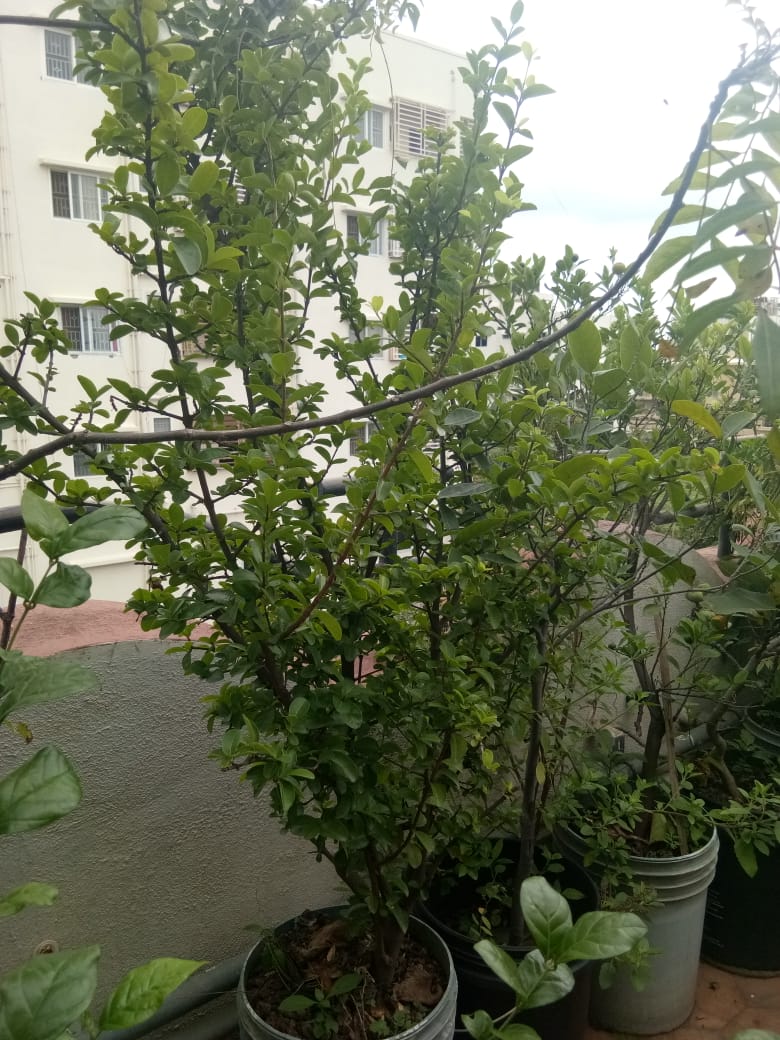
· You might make mistakes in growing and harvesting the plants, it is a trial and error method and with some experience, one will learn and adapt.
· Rely on traditional wisdom; you don’t need to pump the soil with chemical fertilisers and manure.
· Indira says that growing your own food is calming and almost therapeutic.
· You should learn to make your own compost, there’s nothing better for your plants.
· Start growing vegetables that are native and local to your area.
· Try as much as possible to swap seeds with other gardeners rather than buying them.
If you are in Bengaluru and looking to grow your own food, it would be beneficial to join one of the many online communities that offer support and help.
(Edited by Saiqua Sultan)
This story made me
-
97
-
121
-
89
-
167
Tell Us More
We bring stories straight from the heart of India, to inspire millions and create a wave of impact. Our positive movement is growing bigger everyday, and we would love for you to join it.
Please contribute whatever you can, every little penny helps our team in bringing you more stories that support dreams and spread hope.



















